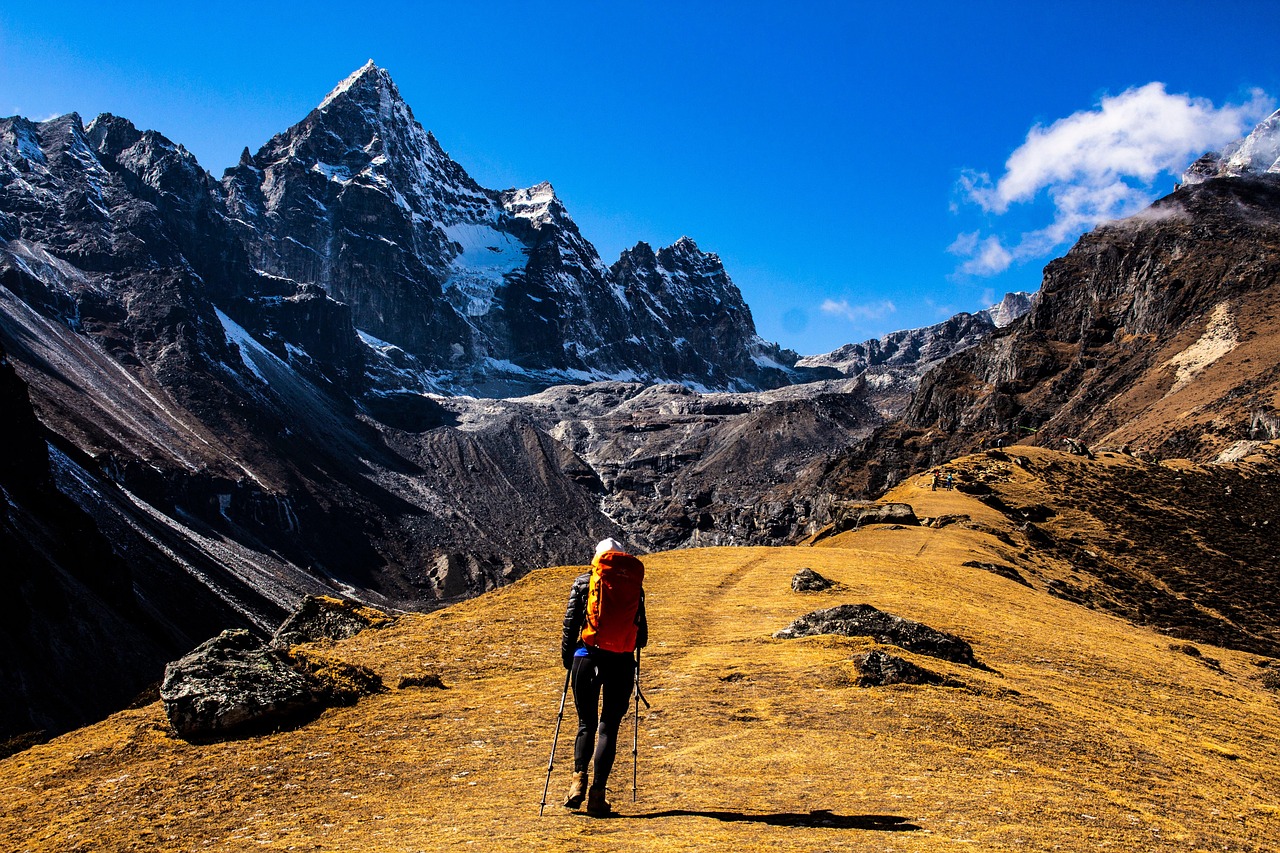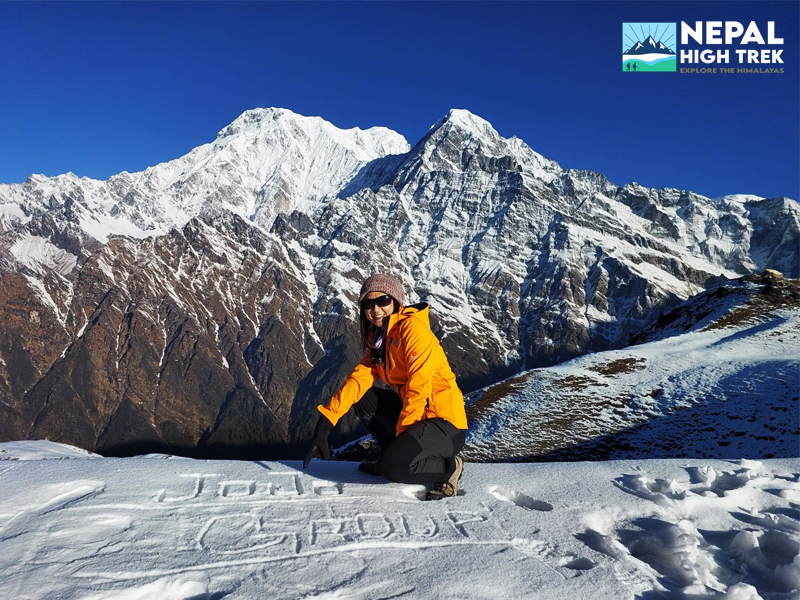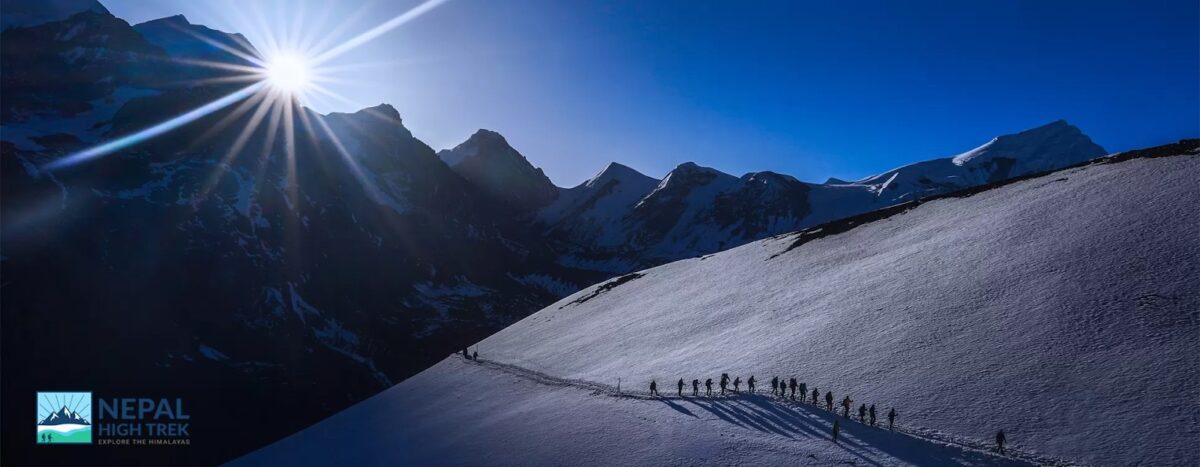If you’re looking for three popular trekking and peak climbing trails for adventure lovers in Nepal, then there are a lot of options to choose from. Regardless of whether you want to start your trekking journey or climb the mountain peaks. You can choose what you want based on your preference for what you like to choose. You can choose either one of them, from Manaslu Circuit, Island Peak Climbing, or Mera Peak Climbing.
The trail circles the beautiful mountains, offering popular trekking and peak climbing trails that give both adventure and safety. You will get a chance to walk through the remote villages, cross different suspension bridges, as well as see the snow-covered mountain peaks. Although the trek goes at very high altitudes, it is safe to say that with beginners, with proper acclimatization and guidance can complete it at ease.
Many people do the popular trekking and peak climbing trails for adventure lovers in order to use them as a training peak before attempting taller mountains. Even though it is a climbing trip, it doesn’t need advanced skills. With basic training and support from the guides, one can even reach the summit as a beginner.
Overall, these popular trekking and peak climbing trails for adventure lovers give you a full Himalayan experience without too much risk. You will enjoy the beautiful nature, meet local people, and grow stronger with every step. These adventures become both safe and fun with the right gear, a good guide and a pace of your own. Whether you choose the Manaslu trek or peak climbing like Island and Mera, Nepal is always there to welcome you warmly. With each route that offers a mix of challenge and joy that helps you fall in love with the mountains.
Manaslu Circuit Trek
The Manaslu Circuit Trek is a great choice for beginners who want to explore Nepal’s high-altitude mountain range. The trek is considered to be moderately challenging, which requires a good level of physical fitness, stamina, and resilience for an extended duration. The Manaslu Circuit and Tsum Valley Trek, when done together that can offer you beautiful views of the Himalayas without being too hard to walk. The trail of Mount Manaslu is considered to be the eighth-highest mountain peak in the world at an elevation of 8,163 meters above sea level.
Mount Manaslu is often known as Kutang by the locals, which is located in the western central part of Nepal. The circuit trek usually covers about 177 kilometers, which takes about 14 to 16 days in total, depending on the pace you walk. You get to start the journey from the small town of Arughat and finish at the popular village of Besisahar. Along the way, you will pass through different terrains that take you through the quiet villages, green forests, and rivers can be combined. They are distinct trekking routes.
The Nar Phu Valley Tilicho Lake Trek can be combined during the trek. While the Tsum Valley Trek, the Ruby Valley Trek or the Nar Phu Valley Trek can be an exploration of a remote and recently opened area. While all these treks are located in the Annapurna region of Nepal, they are not necessarily part of the Manaslu Trek. If you do not necessarily want to do the Manaslu Larke Pass Trek, then the Lower Manaslu Trek is an easier trekking option that focuses on the lower regions of the Manaslu area. With a focus on cultural and historical aspects, it can be a memorable trekking journey.
Island Peak Climbing
The Island Peak Climbing is one of the best options for three popular trekking and peak climbing trails for adventure lovers in Nepal. It is situated at an elevation of 6,189 meters above sea level. Also popularly named as Imja Tse by locals. Many new climbers choose Island Peak to start their mountaineering journey. The island climb offers a good mix of trekking a basic climbing. You do not need advanced skills, but some training and a guide can help a lot. This peak is near Everest Base Camp, so the views are amazing. You will see big mountains like Everest, Lhotse, and Ama Dablam on the way. The trek to Island Peak base camp takes about 12 to 14 days. It is a good length for beginners to get used to the high altitude and hiking on rough paths.
To climb Island Peak, you must join a guided tour with a good company. The guides give you training on how to use climbing gear like crampons, ice axes, and ropes. They also teach you safety skills for icy slopes and crevasses. You get to camp at the base camp as well as the higher camps before the final summit day. The teamwork and following your guide’s instructions are important to climb has some steep and icy sections. You should prepare physically before the trip by walking, running, and doing strength exercises. Additionally, packing warm clothes alongside sturdy yet already worn boots and climbing gear is essential.
However, the Island Peak Climbing is a perfect choice if you want to try mountain climbing in Nepal. It is a popular trekking and peak climbing trail for adventure lovers. But still offers a challenge and beautiful scenery. The journey combines trekking as well as easy technical climbing. Furthermore, you get to experience the Sherpa culture and stay in mountain villages. With good preparation and a guide, you can safely reach the summit and enjoy a big achievement. Many people remember this climb as a great start to their adventure in the Himalayas.
Mera Peak Climbing
The Mera Peak Climbing is one of the easiest yet most popular trekking and peak climbing trails for adventure lovers in Nepal. It is situated at an elevation of 6,476 meters above sea level, which makes it the highest trekking peak in the country. Many people choose to climb the Mera Peak to start their climbing journey. It’s because it does not require advanced mountaineering skills. However, it still does require some basic training and good physical fitness. The trek to Mera Peak base camp passes through beautiful forests, small villages offering stunning views of various mountain ranges, including Everest, Lhotse and Makalu mountain range. The whole trip usually takes about 14 to 16 days to complete the journey. This gives climbers enough time to adjust to the altitude as well as enjoy the peaceful mountain environment.
To climb Mera Peak, you need to join a guided group or hire a certified guide. The guide will teach you how to use climbing gear like crampons and ice axes. You will also learn important safety skills to handle snow and ice on the summit day. Climbers stay in tents at base camp and higher camps before the final push to the top. The climb itself is not very technical, but it does include some steep snow slopes, so careful steps and teamwork are important. Before heading on the trip, you should train by walking long distances and doing exercises to build both strength as well as stamina. Also, packing warm clothes, good hiking boots and climbing gear is very important.
Another excellent choice for people who want to try Short Mera Peak Climbing is a great climbing trail for adventure lovers here in Nepal. It offers a perfect mix of trekking as well as simple mountaineering challenges. You can safely reach the summit and enjoy incredible views of the mountain with the preparation along a trusted guide. The journey lets you not only experience the local Sherpa culture but also lets you visit the remote mountain villages. Many climbers find Mera Peak quite a rewarding adventure, building their confidence for future climbs.









